Sexually transmitted infections, commonly referred to as Understanding STIs, are a topic often shrouded in stigma and misinformation. Yet, they’re incredibly important to understand, not just for your health but for the health of your community. In this guide, we’ll break down the essentials of STIs—what they are, how they’re spread, prevention tips, and the latest updates in treatment and awareness. Let’s talk about this in plain language, without judgment, so everyone can grasp the key points and make informed decisions.
What Exactly Are STIs?
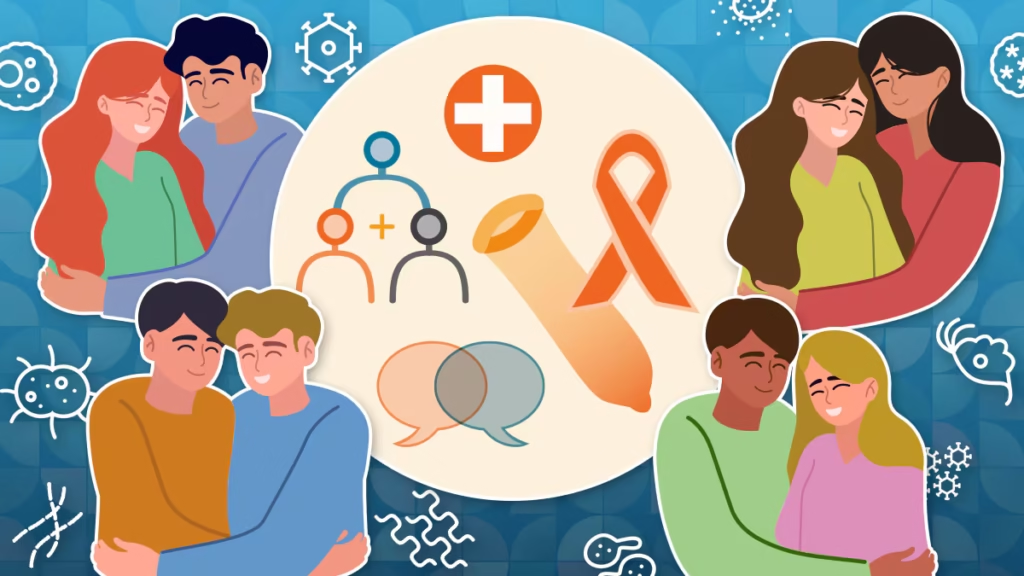
STIs are infections that are mostly contracted during intercourse, such as oral, anal, and vaginal sex. They can also be transmitted through non-sexual means like shared needles, childbirth, or breastfeeding in some cases. The term “STI” is now often preferred over “STD” (sexually transmitted disease) because an infection doesn’t always develop into a disease. Many people with STIs don’t have symptoms, but they can still pass the infection to others.
Common STIs include:
- Chlamydia
- Gonorrhea
- Syphilis
- Human Papillomavirus (HPV)
- Herpes Simplex Virus (HSV)
- Human Immunodeficiency Virus (HIV)
- Trichomoniasis
- Hepatitis B and C
How Do STIs Spread?
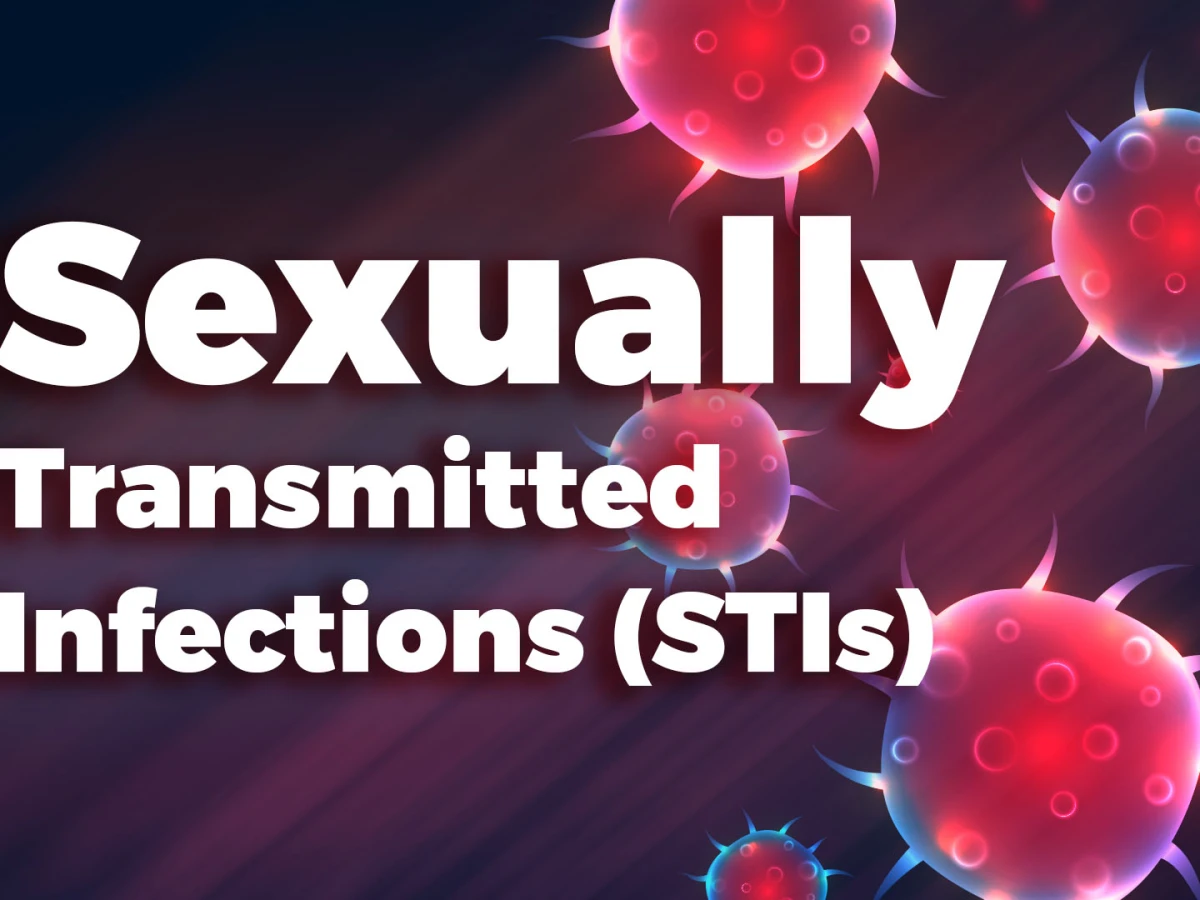
Most STIs are spread through bodily fluids like semen, vaginal fluids, and blood. Skin-to-skin contact can also transmit some infections, such as herpes or HPV. It’s important to understand that STIs aren’t limited to penetrative sex—oral and anal activities can also lead to transmission. Even sharing sex toys without proper cleaning can pose a risk.
In rare cases, STIs can spread through:
- Non-sterile needles (e.g., during tattooing or drug use)
- Mother-to-child transmission during pregnancy, childbirth, or breastfeeding
Why Should You Care About STIs?
Here’s the thing: many STIs are treatable, and some are even curable, but if left untreated, they can lead to serious complications. These may include infertility, chronic pain, or increased risk of other infections like HIV. Beyond the physical consequences, the emotional toll of dealing with an STI—especially when compounded by societal stigma—can be immense.
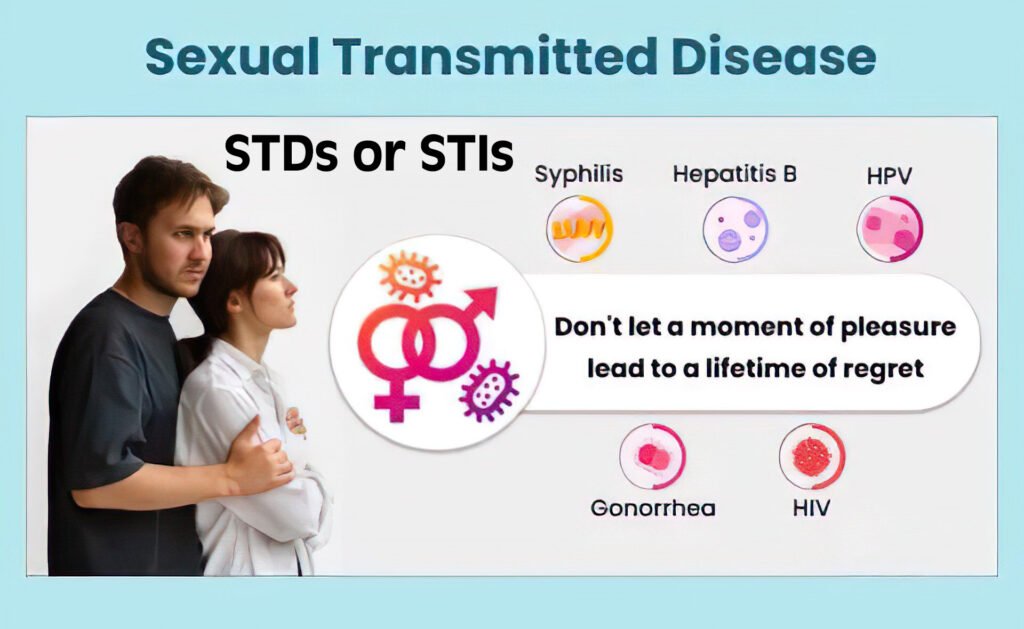
And let’s not forget the broader picture. When STIs go undiagnosed and untreated, they can spread within communities, impacting public health at large.
Signs and Symptoms of STIs
The tricky part about STIs is that they don’t always show symptoms. This is why regular testing is so important if you’re sexually active. But if symptoms do show up, they could be as follows:
- Chlamydia and Gonorrhea: Pain during urination, unusual discharge, or pelvic pain.
- Syphilis: Painless sores in the early stages, followed by a rash, fever, or swollen lymph nodes.
- HPV: Genital warts or abnormal Pap smear results (in women).
- Herpes: Painful blisters or sores around the mouth or genitals.
- HIV: Flu-like symptoms in the early stages, followed by more severe immune system damage if untreated.
- Trichomoniasis: Itching, burning, or unusual discharge.
If you notice anything unusual or experience discomfort, don’t hesitate to seek medical advice. Early intervention can make all the difference.
Prevention Tips
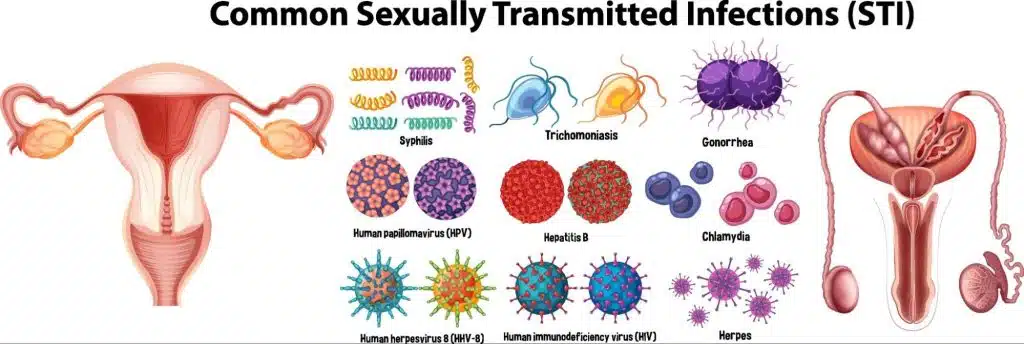
The good news is that STIs are preventable. Here are a few easy actions you can do:
- Use Protection: Condoms and dental dams can significantly reduce the risk of transmission during sex.
- Get Vaccinated: Vaccines are available for some STIs, like HPV and Hepatitis B. If you’re eligible, getting vaccinated is a smart move.
- Regular Testing: Make STI testing a routine part of your healthcare, especially if you have multiple partners or engage in unprotected sex.
- Limit Partners: While it’s perfectly fine to have an active sex life, being mindful about your number of partners and maintaining open communication can help reduce risks.
- Avoid Sharing Needles: This reduces the risk of blood-borne infections like HIV and Hepatitis C.
- Stay Informed: Knowledge is power. Understanding the risks and how to mitigate them can help you make safer choices.
The Latest in STI Treatment and Research
Thanks to advances in medicine, managing and treating STIs has become more effective than ever. Here are some notable updates:
- Rapid Testing: New rapid testing technologies are making it easier to diagnose STIs quickly, sometimes within minutes. This is particularly helpful in remote or underserved areas.
- Antibiotic Resistance: Scientists are closely monitoring antibiotic-resistant strains of gonorrhea and other STIs. New treatment protocols are being developed to address these challenges.
- HIV Prevention: PrEP (pre-exposure prophylaxis) and PEP (post-exposure prophylaxis) are game-changers in preventing HIV. These medications can reduce the risk of infection by over 90% when used correctly.
- HPV Vaccines: The latest versions of the HPV vaccine cover more strains of the virus, providing even broader protection against cervical and other cancers.
- Telehealth Services: Many healthcare providers now offer virtual consultations and at-home STI testing kits, making it easier than ever to stay on top of your sexual health.
Busting Myths About STIs
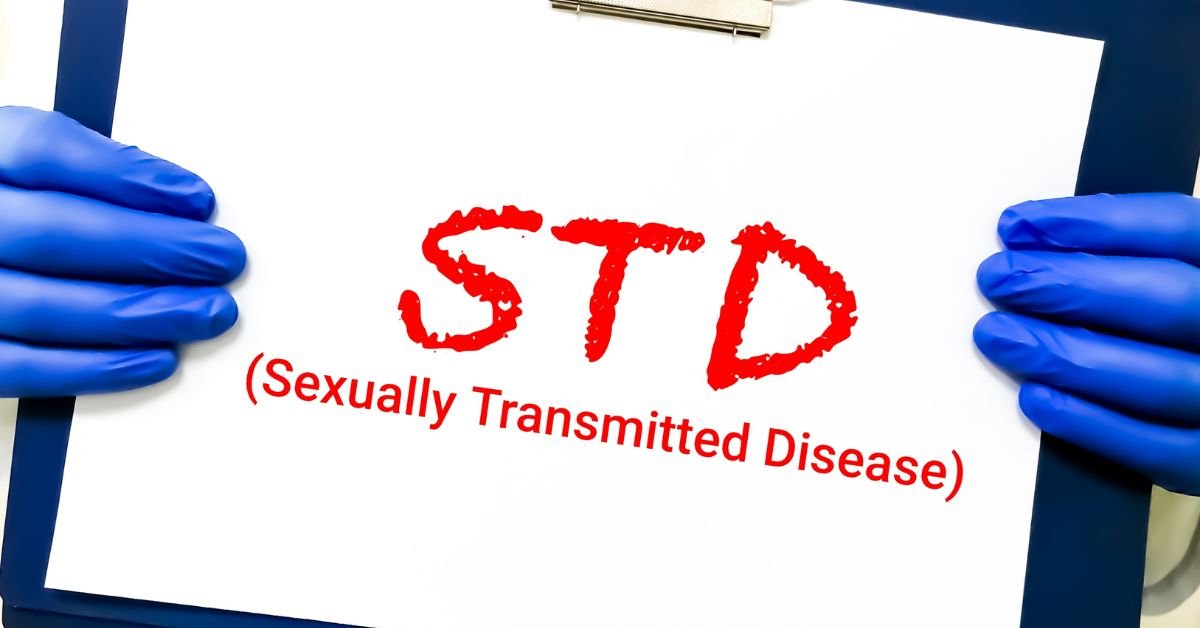
There is a great deal of false information regarding STIs
- Myth: Oral intercourse cannot result in a STI. Many STIs, including herpes, gonorrhea, and syphilis, can be transmitted through oral sex.
- Legend: “You can tell by looking at someone if they have a STI.” Fact: A person’s appearance cannot be used to determine whether they have a STI.
- Myth: “Only promiscuous people get STIs.” Fact: STIs don’t discriminate. Anyone who is sexually active can get one, regardless of their lifestyle.
Overcoming the Stigma
One of the biggest barriers to addressing STIs is the stigma surrounding them. People often feel shame or fear about getting tested or disclosing their status. But here’s the truth: STIs are incredibly common. Millions of people deal with them every year, and seeking help is a sign of responsibility, not failure.
If you’re nervous about talking to your healthcare provider, remember that they’ve seen it all before. They are there to assist you, not to pass judgment. You can also look for clinics or organizations that specialize in sexual health—they often provide a more understanding and supportive environment.
Final Thoughts
Taking care of your sexual health is just as important as any other aspect of your well-being. STIs are nothing to be ashamed of; they’re a health issue like any other. By staying informed, getting tested regularly, and practicing prevention, you’re not just protecting yourself—you’re contributing to a healthier, more informed community.
Remember, knowledge and action go hand in hand. So talk openly, ask questions, and don’t hesitate to seek help when you need it. Your health is worth it.




